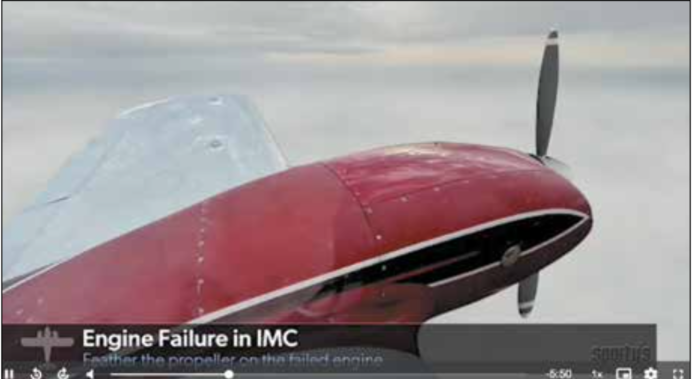It’s that tiny, niggling detail between you and the professional pilot job or you and the traveling machine that you’ve wanted for years—the multi-engine rating. It’s the schizophrenic rating—great because there’s no written test and awful because you’ll be shelling out a boatload of money every hour you fly the trainer.
We surveyed the market for multi-engine training for the pilot who needs the rating for a flying job as we’ll as the prospective owner of a twin to see what’s out there in the flight school world, what the rating is likely to cost, what you should know going into flight training and what you can do with the rating after you get it.
There is good news—there are a number of schools that either specialize in multi-engine training or do a great deal of it as an adjunct to their other training. We also found that most of them are busy—with the ones we talked to reporting a waiting list of at least two months.
Surprisingly, the majority of schools we reached out to did not return our emails or phone calls asking for information. We assume that they are so busy that they can’t be bothered or they’ve gone out of business—neither is a good sign. We also found some places that claim to be able to put you through the rating but only had one airplane, in crummy condition, that broke constantly and would be down for days or weeks at a time.
SPECIALIZE
Our conclusion was that if you want the rating, go to a school that specializes in the training, has at least two twins available and spits out multi-engine pilots as if they were on an assembly line. Those schools have a syllabus that works, the airplanes are flying regularly so they either don’t break or can be fixed fast and they have good access to designated examiners (DPEs).
We are of the opinion, based on experience as students and CFIs and working with flight schools, that the best way to get the rating is to do it all at once. We think that a commercial add-on multi-engine rating can easily be done in four days—which include the checkride—and fewer than 10 hours in the airplane. That’s if—and it’s a big if—you show up current and seriously proficient in flying instruments in complex, single-engine airplanes.
We think that the cost of the rating will run on the order of $5,000.
INSTRUMENT CURRENT
If you are not instrument current and/or your constant-speed prop and retractable gear skills in a 150-knot or better airplane are rusty, you’re going to spend a bunch of money getting your game back in order before you can start to worry about developing multi-engine chops. Do we have your attention?
BUYING A TWIN
If you are getting the rating so that you can step into a multi-engine airplane that you want to buy, have a long talk with your insurance broker beforehand. While you probably won’t want to subject your new acquisition to the rigors of training for the rating, you’ll need to find out if you can get insurance in a twin with your level of experience, ratings and age.
If you can get insurance, plan on facing a requirement from the insurer for at least 25 hours in the new airplane with an instructor in the right seat and possibly additional time with a “mentor” pilot riding along. Insurance brokers told us that your insurer will probably require that you complete a simulator-based training program tailored to the type of twin before you are approved to fly it on your own and that you’ll have to take simulator-based recurrent training annually. That cost should quickly offset any attractive purchase price for the twin that you are considering. So … do you really want to buy a twin?
SCHOOLS
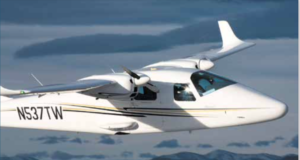
All multi-engine flight schools are not created equal. Based on our conversations with training facilities and pilots who obtained multi-engine ratings recently we strongly recommend that you do your homework when deciding on a flight school.
In our opinion, the school should have at least two twin trainers—of the same type and nearly the same instrumentation, whether glass or round dial. That’s because there are a lot more pieces and parts to break on a twin than a single and if something breaks there is another airplane that you can fly. The corollary is that the student load has to be such that if one airplane breaks the other(s) can carry the load.
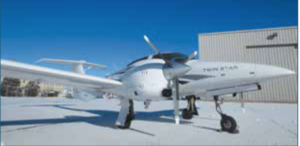
We spoke with active CFI Dalin Hubbard who recently finished up his multi after what we consider to be a nightmare experience. He went to a school that currently advertises the rating in six to ten hours in an early-model Cessna 310 (we aren’t naming the school). He was IFR current. He was told to expect six to seven hours for the rating (we think that’s realistic if there is no delay in training). He started in August 2020. The airplane broke almost immediately. It broke again and again. One time getting a replacement part installed took a month. His training—in fits and starts—took over four months and 17 hours of flying time because he had to keep relearning stuff he’d mastered before the airplane broke the last time.

The only time we recommend attending a school that has but one trainer is if multi-engine training is the focus of the school, the school has been around for a long time and it has a supply of spare parts on hand.
IT’S BROKEN
We also recommend avoiding old, high-performance twins as trainers such as the Cessna 310 and Beech Baron. The reason is that the airplanes have such complicated systems and are so maintenance intensive and expensive to maintain that they can be bought cheaply. We’ve seen way too many one-airplane schools that decided to do multi-engine training and got into the role by buying a cheap 310 or Baron and couldn’t afford to maintain them or don’t bother to do so. Don’t walk away from those schools, run.
We think that the school should have a simulator that reasonably duplicates the trainer you’ll be flying. It will save you money and time in getting the rating.
We also think that the school you choose should be willing to set up a schedule for you to get there, take the course and take the checkride within a week—with a day or so leeway for weather.
CHECKRIDE SCHEDULE
We heard horror stories of pilots who got into their training only to discover that they could not schedule a checkride for up to three months. In our opinion, that is unconscionable behavior on the part of the school. We recommend not scheduling training without having the checkride also scheduled to take place within a day of completion of the training or on the final day. If the school can’t manage that, or a close approximation, go elsewhere.
Yes, you may have to travel for the training. In our opinion, that’s still cheaper than trying to do it catch-as-catch-can with a local operator where you’ll rack up hours and dollars relearning stuff that you’ve forgotten.
YOUR OBLIGATION
The school owes you professionalism in training. You owe yourself the same—you have to take this rating seriously or it will eat your lunch—and wallet. Multi CFIs told us that too many multi students show up thinking that the training is a lark, unlike the work they had to do for the commercial or instrument.
We’ll say it loud and long, multi-engine training is some of the most fun aircraft training you’ll ever have. Grabbing a handful of power levers and shoving them to the noisy position while getting shoved back in your seat is so much fun as to be addictive. However, as Phil Solomon, CFI and part owner of Heart of Virginia Aviation, told us, “Take the process seriously. It’s a serious course of study and DPEs don’t give out new tickets lightly because of the potential for pilots to kill themselves in twins.”
That means showing up absolutely prepared to learn—a couple of CFIs told us stories of pilots who showed up for a multi course convinced that they were the greatest thing to ever hit aviation. Their unwillingness to listen and learn made the rating a long, expensive process.
Arrive having read everything the school provides, including the syllabus and the POH for the airplane, and having run some sample takeoff performance and weight and balance calculations. The school should provide you that stuff. If not, go elsewhere.
Study and learn the systems—cold. They may not be intuitive and what you don’t know can hurt you—not just on a checkride, but in real life.
If you are instrument rated, present yourself instrument current and proficient. You do not want to spend money getting the rust off your instrument skills in a $300-an-hour airplane.
Ask questions of the school. You are entitled to clear, complete responses—and you are entitled to responses, that’s basic professionalism. We were surprised at the number of schools that did not respond to our questions. If a school isn’t responsive to your inquiries it’s a red flag. Once they’ve got you and your money, they may not treat you well. You don’t want to be sitting in a motel waiting for them to get around to working on a broken trainer.
THE AIRPLANES
In no particular order, our thoughts on the various multi-engine trainers.
Piper Seminole. The choice of most flight schools. Decent operating cost but perhaps too easy to fly and does not necessarily teach respect for Vmc.
Tecnam P2006T. Flight schools report operating costs are that of a 172 with
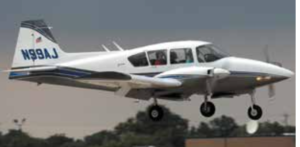
total fuel burn less than 8 GPH. We think it’s an excellent multi trainer but with a lousy POH and a 4000-landing gear replacement limitation that Tecnam should have fixed years ago.
Diamond DA-42 Twin Star. Those with FADEC have little for the pilot to do when an engine quits, so a poor trainer for future piston-engine twin pilots. However, jet-like handling and systems make it a good trainer for aspiring jet pilots.
Piper Apache. Ancient, but a great trainer if it is aggressively maintained. It

teaches respect for Vmc and the skill to get what little single-engine performance it has.
Piper Seneca. The utility infielder of piston twins. It does virtually everything well, including training, without breaking the bank.
Beech Duchess. A slightly better handling Seminole, although the modest number built means parts can be a problem.
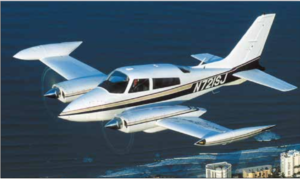
Cessna 310 and Beech Baron. Powerful, fast, with demanding handling—they are trainers that keep students on the edge of their ability. However, fuel burn and high maintenance costs have pretty much taken them off the flight line.
Grumman Cougar. Rare, efficient and not often used as a trainer. Parts availability is an issue.
CONCLUSION
In our opinion, choosing a multi-engine school carefully can mean the difference between a fun, challenging, weeklong experience that costs around $5000 and a nightmare that lasts weeks or months and costs twice that number.
Do your homework, show up ready and willing to learn, and have a ball playing with all that power. You’ll walk away ready to eat nails and spit out the heads.

